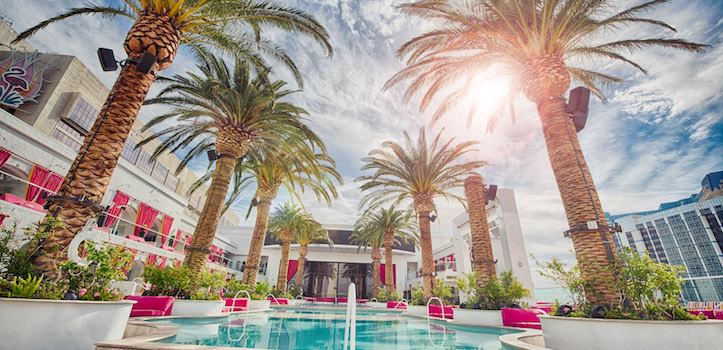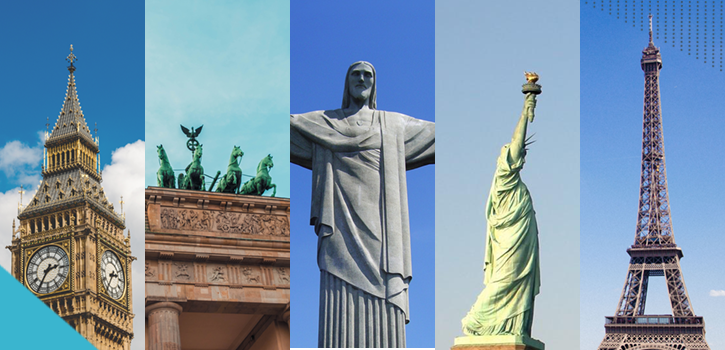When it comes to the luxury sector, France doesn’t have much to worry about. Topping the table with a 25% global market share, the country’s high-end brands like Dior, Louis Vuitton, Chanel and Hermès set the tone for the rest of the international luxury market.
But France isn’t the only country to excel on the luxury market… Italian leather and haute couture are popular in the United States, the Brits continue to charm with their fine porcelain tableware, the Northern Europeans stand out for their private jet and yacht motor parts and the Germans are the undisputed leaders in the automotive sector.
Luxury crosses country borders; luxury is multicultural… but to make your mark in this competitive sector it’s better to look again at the classics and take heed of these five key tips.
Want to know more about expanding your eCommerce business globally? Discover our free eBook!
1. Identify countries with promising markets…
Today, consumers from emerging countries in the luxury sector such as China, Russia and the United Arab Emirates are driving international growth in the market. In more mature markets like Europe, the United States and Japan, sales are slower. According to a survey by Bain & Company, the higher 6 to 8% growth forecast for 2018 is due to the behaviour of Chinese millennials.
These new young consumer targets (aged 18 to 35) are increasingly tempted by luxury goods and now account for 85% of growth in the industry. They are also attracted by “Made in France” luxury, which remains a point of reference for the country (French products even retain their French-language designations of origin abroad). Meanwhile, the Americans prefer Italian labels.
2. …and countries about to emerge
One example is Vietnam, home to a handful of well-off individuals who do not like to skimp on their shopping. Almost half the population is aged under 30 and many people return to the country following time studying abroad. They come back with new tastes, a thirst for knowledge and a hunger for new products and services. Consumption patterns are gradually mirroring the Western model. “Malls” regularly open in Ho Chi Minh City and Hanoi selling a variety of goods including luxury products aimed at middle-class purchasers. The country will make an ideal future location for international expansion.
3. Make yourself known at foreign trade fairs and airports
Do as T.T. Trunks, a leather business specialising in making trunks for champagne and humidors for cigars, has done. Founder Juliet Trossat began by visiting foreign trade fairs in 2010, including popular interior design event INDEX in Dubai. Julien was supported by the Haute-Vienne Chamber of Trade, which covered half of his costs.
In addition, T.T. Trunks benefited from the support of Business France, which took care of the logistics as well as all transportation and customs formalities. This body, the result of the merger between Ubifrance and the Invest in France Agency (AFII), helps small and medium-sized businesses and middle-market companies to export abroad. T.T. Trunks attended alongside other French businesses and benefited from this showcase of French luxury to receive €120,000 worth of orders at the trade fair.
Have you considered the value of airports? Almost half of all luxury products are purchased by travellers, either in a foreign country (31%) or as they go through the airport (16%). For consumers from emerging countries, this figure rises to 60%. Something certainly worth remembering…
4. Think “millennials and customisation”
Nobody can avoid the digital experience, and this includes the luxury sector. Although those working in the field used to meet their customers at brick and mortar stores, they are now focusing on the digital sector, a choice validated by the 24% e-commerce boom it saw in 2017. The bigger “fish” are following suit: the Richemont Group (including Cartier, Lancel and Chloé) has acquired the entire share capital of luxury online seller Net-à-Porter, while LVMH has launched its own website: www.24sevres.com.
Social media is well worth using as part of this digital strategy, especially when targeting millennials. But watch that you don’t apply a standardised approach: 45% of consumers say they are looking for personalised luxury products and services. It’s not enough to be where the consumers are: you also need to tempt them with custom services and buying experiences. Luxury is NOT only about the product itself!
5. Use the “Made in” factor
But not always! In a 2013 survey by the French Directorate General for Enterprise on the values associated with the “Made in France” label, luxury, fashion and gastronomy came out as French sectors favoured by foreign consumers as they “guarantee aesthetics, originality and style”. Indeed, these consumers are buying more than just a product: they are investing in an image of French sophistication and etiquette.
So Made in France is in favour…but not always! Consumers also associate the label with “less technical flexibility” and don’t think it offers good value for money. It doesn’t rival “Made in China” on prices or “Made in Germany” on quality, especially when it comes to electrical products, cars and household appliances, which are perceived negatively by foreign consumers.
And what about “Made in England”? These products also have export value, as proven by Andrew Guest, Commercial Director at Thomas Goode – a brand specialising in porcelain tableware whose customers include the Queen and the Prince of Wales. Hong Kong, London, Paris… Andrew says he sells “plenty in London and the surrounding areas but exports are really starting to take off”.
These five key principles are well worth remembering when you’re trying to build your international export strategy in the luxury sector. They apply when you’re deciding which country or countries you want to launch in, when choosing your distribution and communications channels and when selecting your targets. However, the product itself must be a beacon of expertise, quality and modernity, no matter the country.
To learn more about international expansion, read our online guide to cross-border selling in Europe!







